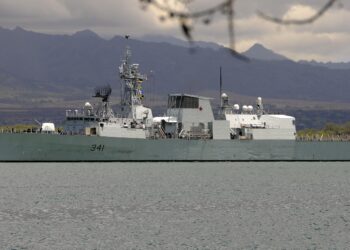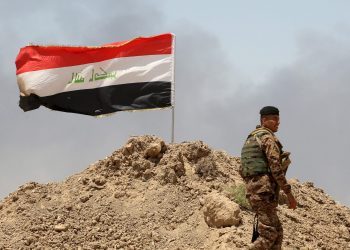AFP, WASHINGTON: Asia has overtaken the Middle East as the largest arms market in the developing world, with India and China locked in a gruelling race to purchase weapons from Russia, according to a report sent to the US Congress this week.
Asia has historically been the second largest weapons market among emerging economies.
But it burst ahead in the 2001-2004 period, accounting for almost half of nearly 35 billion dollars in arms transfer agreements sealed with the developing world, the independent Congressional Research Service said.
“Until such time as the Indians and the Chinese stop buying as much as they have, and until such time the Middle Eastern oil barons start making major buys, I don't see this trend changing in the next year or so, it's going to take a while,” Richard Grimmett, author of the annual study, told AFP.
In the 1997-2000 period, Asia was already catching up on arms transfers, hitting a value of nearly 31 billion dollars compared with leader Middle East's almost 37 billion dollars, the report said.
Transfers to the Middle East in 2001-2004 totalled 28.5 billion dollars.
Five of the top 10 arms recipients in the developing world in 2004 were in the Asian region, the report said. They were China, India, Taiwan, Pakistan and South Korea.
During the 2001-2004 period, China emerged tops among developing nations in terms of arms transfers, concluding 10.4 billion dollars in deals, followed by India with 7.9 billion dollars.
But in 2004, India overtook China, concluding deals worth 5.7 billion dollars. China ranked third after Saudi Arabia with 2.2 billion dollars, the report said.
Grimmett, a national defense specialist with the Congressional Research Service, an arm of the Library of Congress, said Asia's arms market was fuelled by purchases from China and India largely from Russia.
He said Russia could step up sales elsewhere in Asia over the next few years.
“Down the road there is always the prospect they would build substantial relationship with other Asian nations… (the market is now) limited in many ways to two primary clients.”
In Southeast Asia, Russia has had some success in securing arms agreements with Malaysia, Vietnam and Indonesia.
Russia ranked first in Asian arms deliveries in the 2001-2004 period with 14.1 billion dollars, followed by 9.6 billion dollars by the United States.
“Russian leaders have made important efforts, in recent years, to provide more flexible and creative financing and payment options for prospective arms clients,” the report said.
“It has also agreed to engage in countertrade, offsets, debt-swapping, and, in key cases, to make significant licensed production agreements in order to sell its weapons.”
The willingness to license production has been a central element in some deals with China and India.
Russia has sold major combat fighter aircraft, and main battle tanks to India, and has provided other major weapons systems though lease or licenced production.
In 2004, Russia concluded a major agreement with India for the transfer of the aircraft carrier Admiral Gorshkov, together with 12 MiG fighters, four MiG training jets, as well as six to eight Helix helicopters for about 1.5 billion dollars.
China, however, continues to be a central client for Russias arms export program, particularly in aircraft and naval systems.
In 2004, Russia sold China air defense missile systems for nearly one billion dollars. It also concluded a 900 million dollars agreement with China for engines for the Chinese J-10 fighter aircraft.









